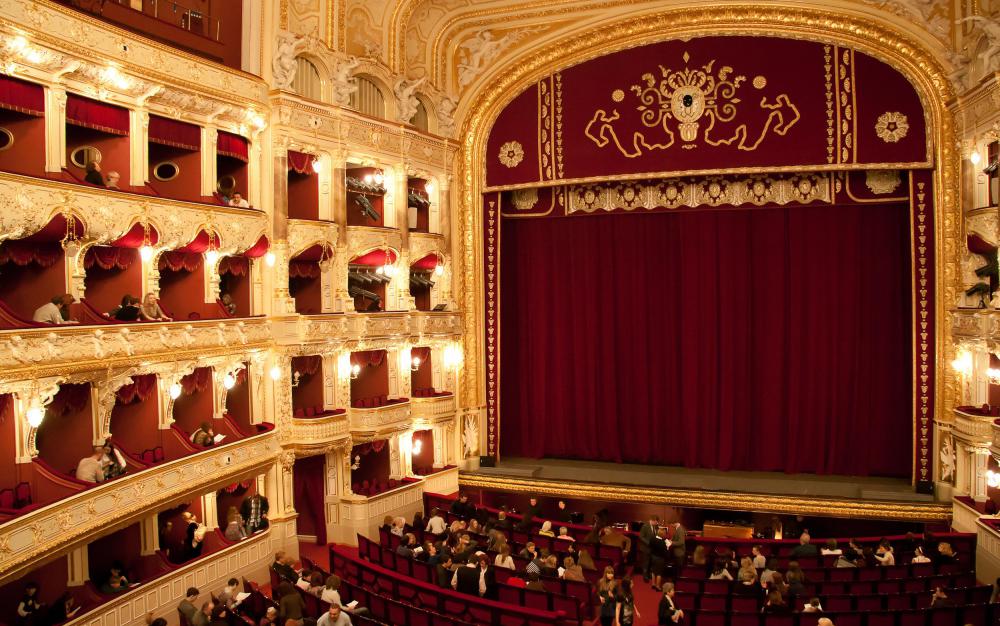At WiseGEEK, we're committed to delivering accurate, trustworthy information. Our expert-authored content is rigorously fact-checked and sourced from credible authorities. Discover how we uphold the highest standards in providing you with reliable knowledge.
What is the Magic Flute?
The Magic Flute is a singspiel in two acts by the Austrian composer Wolfgang Amadeus Mozart, who is also known for his other operas like Don Giovanni, Così fan tutte, and The Marriage of Figaro, as well as symphonies and other works. The Magic Flute was composed in 1791, with a libretto by Emanuel Schikaneder, a composer, actor, and theater director who had commissioned this setting of his own text.
The premiere of The Magic Flute took place on 30 September 1791 at the Theater auf der Wieden in Vienna. The opera was wildly popular, with over 100 performances given in the first year. Schikaneder, the librettist, played the role of Papageno in the first performance, which Mozart conducted from the pianoforte. The Queen of the Night was played by Mozart’s sister-in-law.

The Magic Flute is an allegory, and this is partly indicated by the abundance of threes in the performance: three slaves, three ladies attendant upon the Queen, three boys, and the three initial chords of the overture. Egypt is suggested, but not an Egypt of history.
The story of The Magic Flute begins with the rescue of Tamino from a serpent by the Queen’s three attendants. Having fainted, he does not know how he was saved, and mistakenly credits Papageno, who allows him to remain in the dark. The attendants show Tamino a picture of Pamina, the Queen’s daughter, and falls in love with it. He is informed that Pamina is the prisoner of Sarastro, and in order to rescue her, Tamino is given a magic flute, and Papageno a set of magic bells. After encountering and overcoming Pamina’s captor, Monostatos, and Sarastro enters, whereupon it is revealed that Pamina was not fleeing Sarastro but Monostatos. Sarastro sends the newcomers to the Temple for purification.

In Act II of The Magic Flute, Sarastro reveals that Tamino and Pamina are destined to wed, but that Tamino must first endure trials, which Tamino agrees to. Papageno is told that if he wants to find a wife, he, too, must undergo trials, and when he learns that Papagena is destined to be his, he agrees, despite serious misgivings. They are both forbidden to speak to any woman for the duration of their trial. They are confronted by the three attendants who threaten then with dire punishments if they disobey the Queen. Papageno believes them, but Tamino stands firm. Monostatos comes upon Pamina and threatens to rape her, as the Queen reveals that her true goal is to have Sarastro killed and gives Pamina a dagger, charging her with this task. She leaves, and Sarastro arrives and stops Monostatos. Tamina reveals what has happened and asks forgiveness for her mother, which Sarastro cannot grant.

The testing is continued as each man meets the woman he loves, but cannot speak to her, and she cannot understand why. Pamina and Papageno, fearing that they have lost their loves, both consider suicide, but are prevented, Pamina by being interrupted by the three boys, and Papageno by the entrance of his true love, Papagena. The Queen and Monostatos make a final attempt to win their way, but Sarastro and the light defeat the darkness.
AS FEATURED ON:
AS FEATURED ON:














Discuss this Article
Post your comments